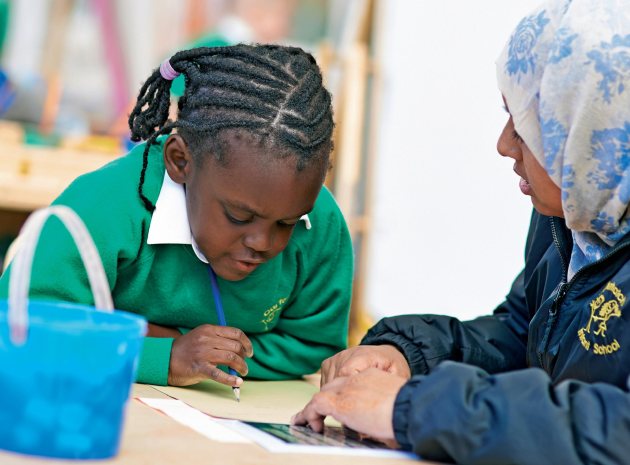To Scribe or Not to Scribe?
Well lets think about it....⏪
⧭Scribing is when the teacher writes down for a child what their writing says. Typically done in early childhood classrooms where children are writing in journals on a topic given to them by the teacher. If I try to envision this classroom dynamic- I see a class full of students who are all through drawing their pictures and are now waiting for the teacher to get to their writing to add their words. I also see the teacher frantically running around the room trying to get to every student's paper so as to scribe their words for them.
I think many scribe thinking they are teaching something by doing it. Perhaps one thinks that they are teaching, "What I say, I can write down." While I understand the idea behind that- the point of student writing is THEY write it down what they want to say and I argue that there are so many other parts of the Balanced Literacy (read more about it) day when students are learning that concept. When are they going to learn that what THEY want to say, THEY can write down?
In my opinion, the BIGGEST reason of all…
Anyways for this school project I will look at scribing a whole different way. See below:
→Another way is to create a book by drawing a story of a book they havd read or even story read in class.
Something to think about>
If adults write for children, we are sending the message that children aren’t really writers, that only adults can do the real writing work. If we truly believe children are writers, we shouldn’t send a mixed message that tells them they are writers, but not really!
Matt Glover
Engaging Young Writers
Anyways for this school project I will look at scribing a whole different way. See below:
On the other hand, there are times that scribing is used as an accommodation. As it explains in the following article. Read article here Another type of accommodations to help kids struggling with writing is to use Dictation (Speech-to-Text) Technology You may hear it referred to as “speech-to-text,” “voice-to-text,” “voice recognition” or “speech recognition” technology. Kids can use dictation to write with their voices, instead of writing by hand or with a keyboard. This can be helpful for kids with dysgraphia, dyslexia and other learning and thinking differences that impact writing.
HOWEVER...
WE CAN ALSO
One way to use it in the classroom- The stories are kept in the children’s folders and become a record of their language development, their story-writing development, their imagination, sometimes their understanding of the world (depending on the content of the story), their pencil control (if there is a picture or if they have added their name) and, in Reception, a record of their phonics and writing development.
→They can be authors on their own learning or topic.
→Their picture can be use as a model to point out on a lesson they have been working on. See example below.
→Another way is to create a book by drawing a story of a book they havd read or even story read in class.
Something to think about>
So, you decide- do you want to keep running around the room to scribe? Or would you rather encourage students to think through their own writing, holding the pencil, and doing the work of a writer while you encourage them to learn that what THEY say, THEY can write down?







This app about creating a book looks fun. I also like how you put in the debate about scribing in early childhood and if teachers should or should not scribe for students at such a young age. I also like how you referenced our engaging Young Writers to preschool to grade 1 in the blog as when I think about scribing I would like to go back to that source.
ReplyDelete